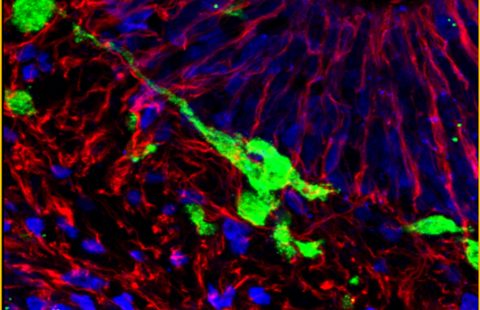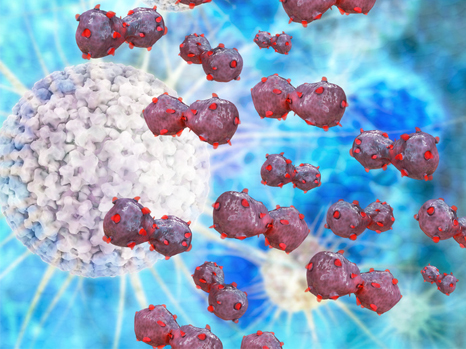©Inserm
One of the current challenges in terms of cancer treatment is how it can be best adapted to patients: today the emphasis is on personalised treatment (factoring in genetic and metabolic profiles). In response to this growing need for personalisation, there is an increasing demand for fundamental research to develop adapted future treatments. Researchers from Inserm and CNRS from the Institute for genetics and molecular and cellular biology (IGBMC) and from the Research Institute at the Strasbourg school of biotechnology (Irebs) have focussed their efforts on PARG, currently thought to be a promising new therapeutic target in the treatment of cancer. Their work has revealed the role of this molecule in regulating gene expression. The results were published on 25 October 2012 in the on-line Molecular Cell review.
Cells are subjected to various stresses throughout their life. Some of this stress can damage DNA. Fortunately, cells have several mechanisms used to repair these lesions. Breaking two DNA strands is one of the most serious afflictions a chromosome can suffer. The cell must repair this break if it is to continue dividing. Repair actions are either performed in an optimal manner, and the cell resumes its normal division cycle, or the lesion is not repaired correctly, causing the cell to die or the appearance of an anomaly that may trigger cancer.
One of the repair mechanisms used is poly(ADP-ribosyl)ation. In this mechanism, some molecules (PARPs) detect DNA breaks and cause poly(ADP-riboses) synthesis that binds with proteins, thus initialising the lesion repair system. As such, this system can act as a ‘saviour’ if the repairs are correctly completed, but, it can be equally damaging in the event of incorrect repair.
In the case of cancer, to ensure the cells are destroyed, PARP inhibitors are currently undergoing clinical tests as therapeutic adjuvant used to increase the receptivity of cancer cells to specific chemotherapies.
In terms of fundamental research, researchers know that the poly(ADP-ribosyl)ation mechanism is reversible and is closely regulated by Poly(ADP-ribose) glycohydrolase (PARG). PARP and PARG thus seem to make up a tandem of molecules dedicated to maintaining genome integrity. PARG targeting has proved to potentiate the action of genotoxic agents, making this molecule a promising new therapeutic target in the treatment of some cancers, as is the case for PARP.
However, little research has been conducted into PARG, but in light of its close links with PARP, researchers are now taking a very close look at its functions.
In this new work, the researchers have demonstrated that in addition to its genome repair role, PARG was involved in modulating the cell’s transcriptional activity.
Given the keen current interest on PARP and PARG inhibitors in the treatment of cancer, it is essential to gain accurate knowledge of the functions and action modes of these promising therapeutic targets, as well as the consequences of their invalidation. This study is the first to highlight how PARG action mechanism regulates gene expression.
These contents could be interesting :
1 IGBMC, Department of Functional Genomics and Cancer, CNRS/INSERM/Université de Strasbourg, BP 163, 67404 Illkirch Cedex, C.U. Strasbourg, France
2 UMR7242 Biotechnology and Cell Signaling, Université de Strasbourg, CNRS, Laboratory of Excellence MEDALIS, ESBS, Bd S. Brant, BP 10413, 67412 Illkirch, France
3 CEA-DSV-iRCM, INSERM U935. Institut A. Lwoff-CNRS 7 rue Guy Moquet, 94800 Villejuif, France
Molecular Cell mise en ligne le 26 octobre 2012

